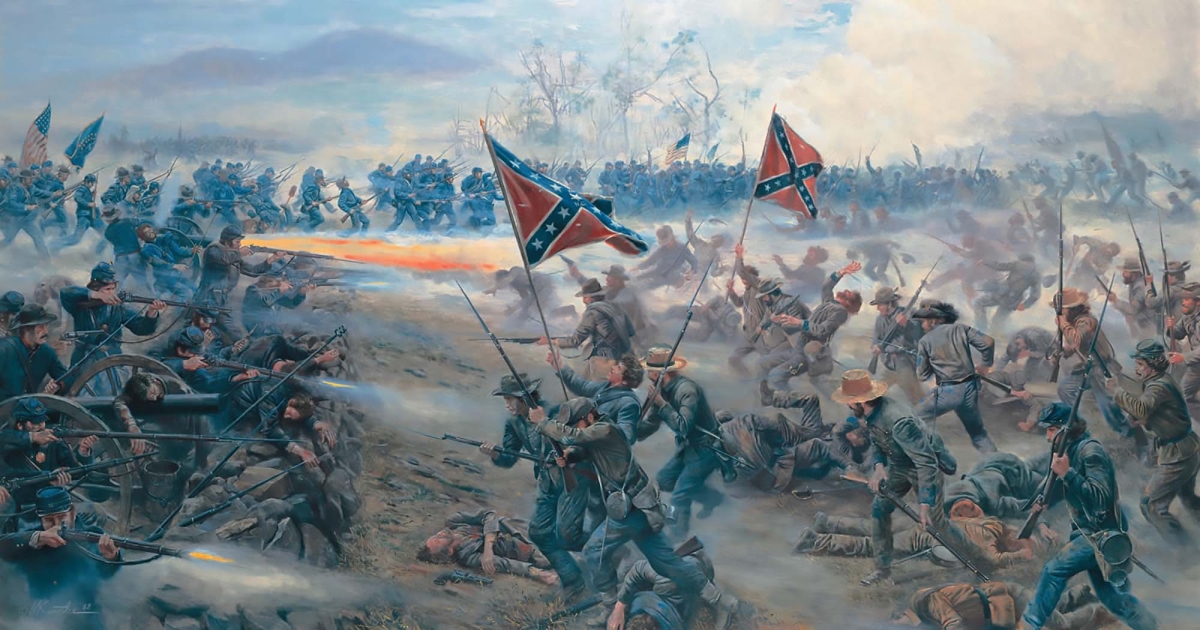Pedersoli Lorenz 1854 rifle
Soon after 1850, in a world of fast progressing firearms, the Lorenz rifle marked a transitional period between the smooth-bore muzzle loading muskets and the breechloading rifles. And we still find it on modern sport shooting grounds.
Pedersoli historic replica firearms are well known since decades and include a collection of some of the most iconic black powder muzzle loading models which have set the path for the evolution of the military firearms along the XVIII and XIX centuries history.
For those of you not acquainted with modern historic replica firearms: we are not talking about “inert” objects to hang up on the wall, but real, finely and faithfully reproduced “shooting” replicas which sport shooters all over the World still use with great satisfaction during International shooting competitions.
All these “black powder only” replicas have their own story to tell: born in Austria, but used also during the American Civil War, the Pedersoli Lorenz 1854 rifle is one of these.
Hammer down: the rifle is at rest, safe to handle
Hammer at half-cock: the internal safety is engaged and the trigger is blocked
Hammer at full-cock: the rifle is ready to fire

Pedersoli Lorenz 1854 rifle
When in 1854 Austria decided it was time to pension the old Augustin 1842 smoothbore musket, the choice for a substitute fell on the fruit of lieutenant Joseph Lorenz mind.
The original version of the Lorenz rifle was quite modern for its times: it acknowledged the awkwardness of the long musket barrels and the need for bullet stabilization to achieve better accuracy, although it was not an entirely original project, being clearly inspired by the Enfield Pattern 1851 and 1853 rifle-muskets.
The Lorenz rifle was shorter, though, for better handling, and was meant for short range combat. Medium range and long-range variants, with progressively longer barrel and tighter rifling were also made, but the short, carbine, Lorenz remained the most popular.
Bore was slightly reduced from the common .58” caliber (14.73 mm) to a tighter .54” (13.72) and while commonly stated as using a Minié bullet, the Lorenz rifle actually used a different bullet, again mutuated by British design: the Wilkinson Solid bullet. This was a full ounce (28 grams) of lead propelled by 55 grains of black powder (full military load).
While the most credited reason for the Lorenz bore downsizing seems to be better accuracy, I surmise that the savings in lead and powder compared to the 58” Enfield load (70 grains of powder behind a 34 gram bullet) won many a heart among the logistics bean counters who were in the loop for the new rifle approval.
Modern Pedersoli .54 caliber hollow base bullets (code USA 523-547) compatible with the Lorenz rifle
Original Lorenz design bullets obtained with the Pedersoli USA 303-547 mould
The Wilkinson bullet
While the Lorenz is often stated as firing a “Minié” bullet, that’s not correct. A Minié bullet has a hollow base (or “skirt” as it’s sometimes called) that expands under the pressure of the hot gases of the burning powder.
The Lorenz fired a Wilkinson bullet, characterized by two deep grooves and corresponding flanges. While these may appear as grease groves at first look, they aren’t: the Wilkinson bullet was patched with greased paper.
When the rifle is fired, inertia opposes bullet forward movement. This, coupled with the kick from the powder combustion squashes the narrower posts into the flanges, and the bullet self-swages into the rifling.
For those interested in building an historically faithful load for the Lorenz rifle, Pedersoli offers also the original .54” Wilkinson bullet.
The bullet was rammed home with a steel ramrod ending in a tulip head with a recess for the bullet tip and a brass band which in theory spared the rifling from direct contact with the rod’s steel: though what happened to the muzzle crown during the frantic loading typical of a battle is another matter entirely. The head was also drilled through so that a patch could be fitted for cleaning the gun.
The design was sound, and the choice of bullet and reduced length made it a handy and accurate weapon, at least on paper. Unfortunately, Austrian state arsenals (which had a very high manufacturing standard) couldn’t supply enough rifles to satisfy the demand, so much of production was outsourced to private manufacturers used to build smoothbore muskets and that often lacked the tools or the skill to keep up to state arsenal standard on such a modern design, so that quality was quite variable and accuracy suffered.
Lorenz rifles from Austria State Arsenal were coveted, while most of the privately produced guns suffered from one drawback or another that made them disliked by the troops.
Short versions had a fixed, block rear sight, while middle and long version had adjustable rear sights, as the Pedersoli replica has. This is a very ingenious little device, which was graduated to hit accurately up to 900 paces away against massed infantry and 500 paces for single targets. While a smoothbore musket accuracy was haphazard at best with “battle” loading, with its Wilkinson “self-swaging” bullet the rifled Lorenz offered fairly better performances.
The rear sight, lowered
The rear sight, rised up
Detail of the muzzle and the fron sight
By learning how to “place and see” the front sight in three different positions in the rear sight, with the bayonet’s lug forming the base of the front sight acting as an aiming aid for the third position, and aiming at different parts of the enemy, an infantryman could achieve hits at a considerable distance.
For those interested in such details, the Pedersoli web site gives a fairly detailed description about the Lorenz rear sight use, with vintage pictures from the original manuals, which is a good thing as the replica is issued with a Pedersoli PMG (Precision Match Grade) barrel.
Variable quality notwithstanding, the Lorenz saw widespread use in many nations worldwide, among which France, Mexico, Italy, where it was used during the second and third independence war in famous battles like Magenta and Solferino, and by both unionist and confederate forces in the American Civil War. We know that the Union bought 226,924 rifles.
Less certain is the amount bought by confederates, but we have evidence of an Eley Brothers invoice dating July 18, 1863 for 600.000 Austrian Rifle Cartridges, in addition from the cartridges the Confederacy was undoubtedly already manufacturing by itself: this, together with other hints, suggest at least 100.000 rifles were bought by the confederates.
The modern Pedersoli replica stands up to the quality standards of the Austrian State Arsenal. Original rifles were manufactured in a variety of finishes, but many were just polished “white”, as the Pedersoli Lorenz rifle replica.
Disassembling the lock of the modern Pedersoli Lorenz rifle replica we find a very good finish on the inside surfaces.
The well-polished wood has an excellent match with metal, stock and barrel are kept together with the unevenly spaced bands typical of this rifle and the parts replicate period stampings, with the characteristic three-digit manufacturing date.
The replica has the cheek rest which was found on many (but not all) Lorenz rifles, again useful in precision shooting. And just like the soldiers of 170 years ago learned how to make the most out of the precision abilities of the Lorenz 1854 model rifle, so do the modern sport shooters, on competition grounds, instead of the battle ones.

Born n Europe, the Lorenz 1854 rifle saw wide use also during the American Civil War of 1861-1865, with a total of over 300.000 pieces delivered to both North and South troops


